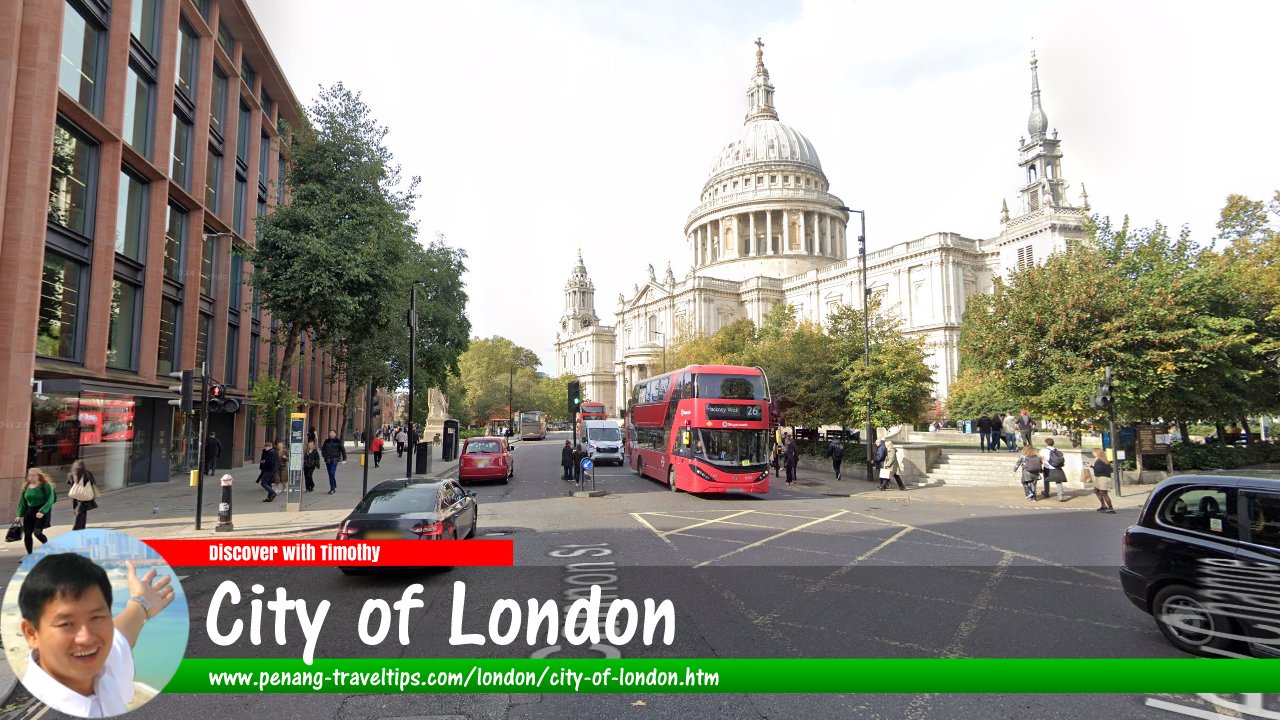 Painting of the City of London
Painting of the City of LondonThe City of London, often simply called "the City" or "the Square Mile," is the historic and financial heart of the British capital. With a history stretching back nearly two millennia, it remains a unique and powerful district - part of London, but very much its own entity. This one-square-mile patch of central London packs a staggering amount of heritage, commerce, and architecture into a compact footprint.
A Brief History
The City of London traces its origins to the Roman settlement of Londinium, founded around 43 AD. By the 2nd century, the Romans had walled the city, establishing its boundaries - boundaries that still define the Square Mile today. Remarkably, the City has remained more or less the same size since then, making it one of the most historically consistent urban areas in the world.Map of the City of London
Size and Governance
At just over one square mile (1.12 square miles or 2.9 square kilometers), the City is the smallest ceremonial county in England. Despite its tiny size, it has its own independent local authority - the City of London Corporation - and even its own police force, separate from the Metropolitan Police.Finance: The Lifeblood of the City
Today, the City of London is one of the world’s leading financial centres, rivaling New York and Hong Kong. It is home to the London Stock Exchange, the Bank of England, and countless banks, insurance companies, law firms, and investment institutions. Financial services remain the core industry, and thousands of global businesses maintain offices here.Skyscraper Central
The City of London has the highest concentration of skyscrapers in the UK. While London generally has a more modest skyline compared to cities like New York or Dubai, the Square Mile is an exception. Known informally as the "Eastern Cluster," the City's skyline includes:- 22 Bishopsgate - the tallest building in the City of London, at 278 metres (912 ft)
- 30 St Mary Axe (The Gherkin)
- The Leadenhall Building (The Cheesegrater)
- The Scalpel
- Tower 42
- Salesforce Tower (Heron Tower)
Transport: Underground and Beyond
Despite its small area, the City is extremely well connected. The following London Underground stations serve the area:- Bank - Central, Northern, Waterloo & City, DLR
- Monument - Circle and District/li>
- St Paul's - Central
- Barbican - Circle, Hammersmith & City, Metropolitan
- Moorgate - Northern, Circle, Hammersmith & City, Metropolitan, and National Rail
- Liverpool Street - Central, Circle, Hammersmith & City, Metropolitan, Elizabeth Line, and National Rail
- Aldgate - Circle and Metropolitan
- Mansion House - Circle and District
- Blackfriars - Circle and District, and Thameslink
- Cannon Street - Circle and District, and National Rail
- Tower Hill - Circle and District
- Elizabeth line (via Liverpool Street and Farringdon)
- Thameslink (Blackfriars, City Thameslink, Farringdon
- Docklands Light Railway (DLR) (Bank station)
- National Rail (Liverpool Street, Cannon Street, Blackfriars, and Moorgate)
Streets in the City of London
- A501 Road
- Bishopsgate
- Cannon Street
- Cheapside
- Euston Road
- Fleet Street
- Ludgate Hill
- Moorgate
- Victoria Embankment
Places of Interest in the City of London
- 30 St. Mary Axe (GPS: 51.51449, -0.0803)

- All Hallows-by-the-Tower Church (GPS: 51.50941, -0.0793)

- Bank of England Museum
- Barbican Centre (GPS: 51.5202, -0.09378)

- Leadenhall Market - a Victorian marketplace with Roman origins
- London Wall (GPS: 51.50988, -0.07603)
 - fragments are still visible around the city
- fragments are still visible around the city - Monument to the Great Fire of London (GPS: 51.51014, -0.08594)

- Museum of London (GPS: 51.51768, -0.09692)
 - chronicling the city's evolution
- chronicling the city's evolution - Old Bailey (GPS: 51.51567, -0.10186)

- Postman's Park - with its touching memorial to heroic self-sacrifice
- St Mary-le-Bow Church (GPS: 51.51374, -0.09364)

- St Paul's Cathedral (GPS: 51.51384, -0.09835)
 - Christopher Wren's iconic masterpiece
- Christopher Wren's iconic masterpiece - The Guildhall - historic centre of city governance
- Tower of London (GPS: 51.50811, -0.07594)
 (technically just outside the City but closely associated)
(technically just outside the City but closely associated)
City of London on Google Street View
(Jul 2022)
Copyright © 2003-2025 Timothy Tye. All Rights Reserved.

 Go Back
Go Back